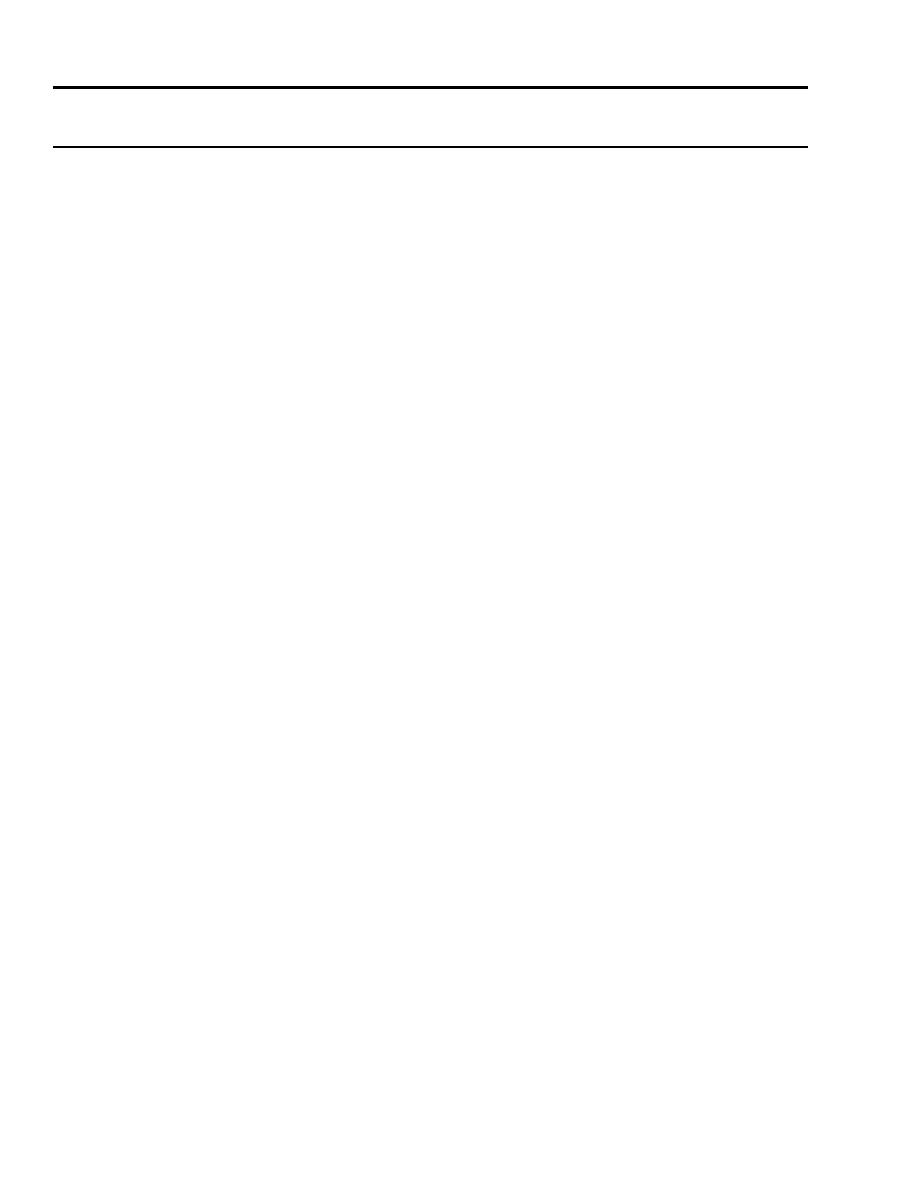 |
|||
|
|
|||
|
Page Title:
FLUID LEAKS AND CHECKING FOR LEAKS |
|
||
| ||||||||||
|
|
 TM 9-2520-238-34
PREVENTIVE MAINTENANCE CHECKS AND SERVICES (PMCS), INCLUDING
0014 00
LUBRICATION INSTRUCTIONS -- Continued
b.
Tighten loose connections.
c.
Replace cracked or broken wires, circuit cards, relays, and connectors.
d.
Replace cracked, torn, or burned insulation and heat shrink tubing.
FLUID LEAKS AND CHECKING FOR LEAKS
NOTE
You are allowed to operate equipment with minor leaks (Class I or II). You must consider how
much fluid the item or system being checked or inspected can hold. When in doubt notify your
supervisor. When operating equipment with Class I or II leaks, continue to check fluid levels as
required in your PMCS. Report Class III or fuel leaks to your supervisor, or notify unit
maintenance for corrective action right away.
54. GENERAL. Fluid leaks in hoses and fluid lines affect the carrier parts operation. The types and classes of leaks are
given below.
a.
CLASS I. Fluid seepage is not great enough to form drops, but is shown by wetness or color changes.
b.
CLASS II. Fluid leakage is great enough to form drops. Drops do not drip from the item being checked or
inspected.
c.
CLASS III. Fluid leakage is great enough to form drops that fall from the item being checked or inspected.
55. CHECKING FOR LEAKS AFTER A MAINTENANCE TASK. After doing maintenance on a part which involves
hoses of fluid lines, check for leaks. If leaks occur after you have done a replace or repair task, find the source of the
leak. Correct the problem. Follow these procedures:
a.
Do visual inspections to find the source of the leak.
1)
Check for cracks on housing or cover.
2)
Check that screws and any connections are not loose, or overtight.
b.
If you cannot see the source of the leak, check the following items:
1)
Check that preformed gasket is not bent, or pinched.
2)
Check machined surfaces for fit and cleanliness.
3)
Install new replacement parts.
c.
If leak persists, notify supervisor.
PREVENTIVE MAINTENANCE CHECKS AND SERVICES
There are no preventive maintenance checks and services (PMCS) or lubrication procedures required for this manual.
0014 00-10
|
|
Privacy Statement - Press Release - Copyright Information. - Contact Us |